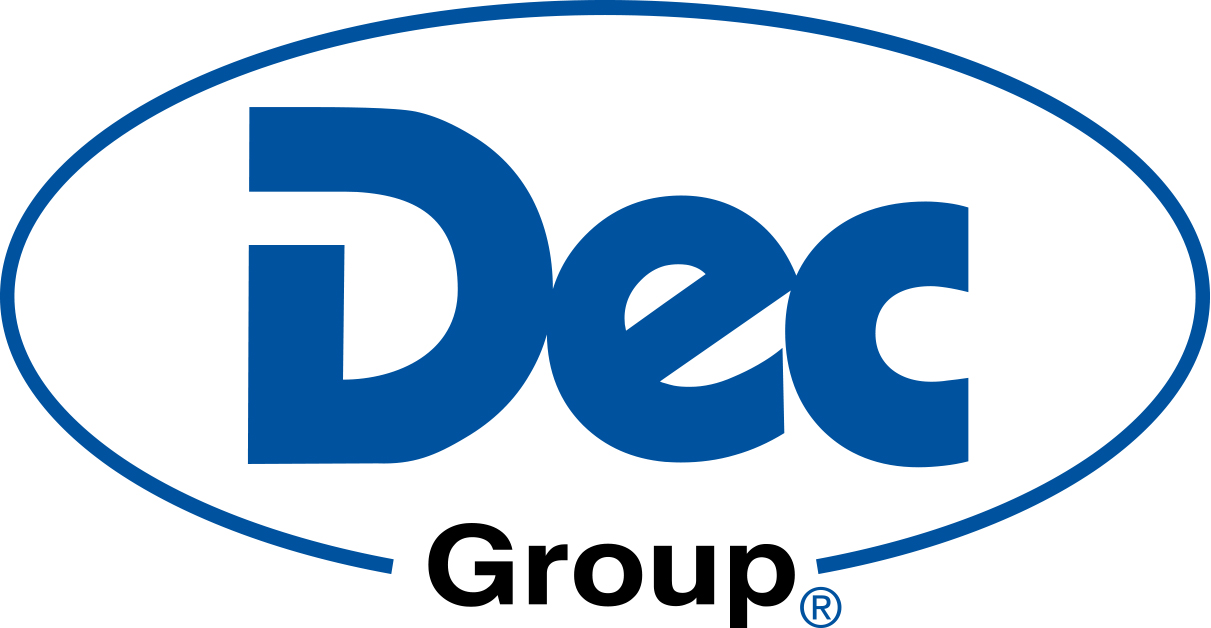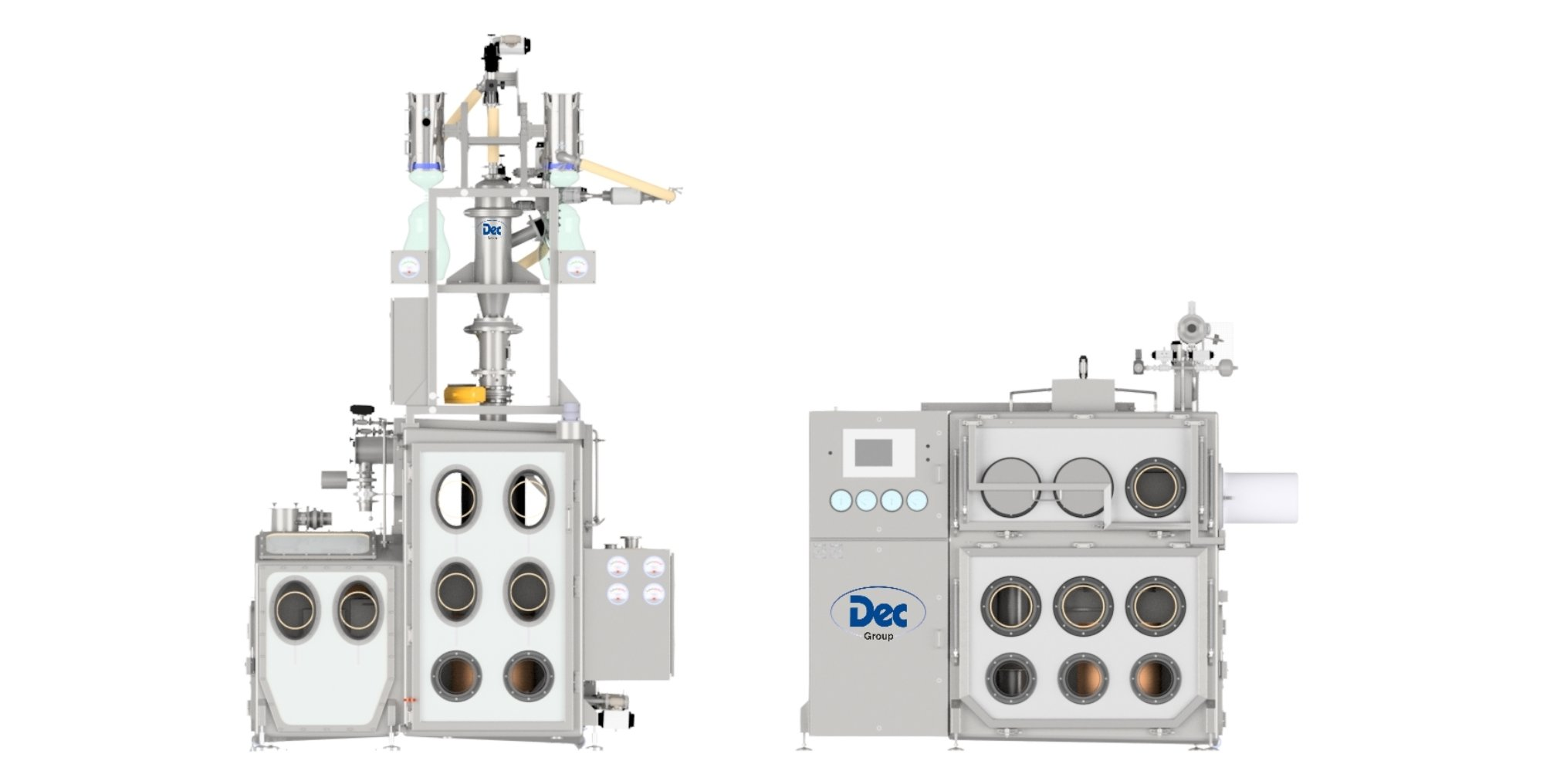By Dec Group
High containment of HPAPIs using Dec PTS and custom designed isolators
Dec’s Powder Transfer System (PTS) provides a thoroughly engineered integrated system for safe handling and high containment of highly potent active pharmaceutical ingredients (HPAPIs).
This bulletin presents a model solution based on use of PTS conveyance combined with filter dryer discharge isolator, integrated pack-off and milling chamber to provide a thoroughly engineered integrated system for safe handling and high containment of highly potent active pharmaceutical ingredients (HPAPIs). The solution is capable of being extended for a micronizing chamber installed on top of the existing enclosure, all meeting category OEB 5 (0.3 µg/m3, 8 hr. TWA) occupational exposure limits.
Background
New drugs are effective at very low doses. Therefore, they are highly active not only for the patient but also for the potentially exposed plant operator during the pharmaceutical production process.
In line with current safety regulations, it is hence important to take all measures to limit the spread of highly active substances within dedicated handling areas.
The level of containment required is determined by the pharmacological potency of the product to be handled.
In the pharmaceutical industry, Occupational Exposure Limits (OEL) are calculated on the basis of the NOEL (No Observable Effect Level) as well as additional specific factors for the time of exposure or the severity of the negative effects. Those values are categorized in the widely used Occupational Exposure Bands (OEB). Substances with high and very high pharmacologic and toxic effects fall into categories OEB 4 (< 10 µg/m3) and OEB 5 (< 1 µg/m3) for which the industry increasingly uses isolators as appropriate containment systems.
High containment solution
The following example presents a filter dryer discharge isolator with integrated pack-off feature, milling chamber and further PTS (Powder Transfer System) conveying to a second pack-off isolator with future extension for a micronizing chamber installed on top of the existing enclosure, all of which meeting category OEB 5 (0.3 µm/m3 , 8 hr. TWA).
This double chamber negative pressure designed isolator installed in ATEX zone 1 area provides a high containment environment during the automated filter dryer discharge of HPAPIs of a Minimum Ignition Energy (MIE) less than 10 mJ.
The unit comprises a rake tool to help with heel recovery through the dryer discharge port. Primary discharge is achieved using the agitator sweep. The lift-up front access door for end-of-campaign maintenance of the discharge port is provided with four glove ports. A glove port guard system, interlocked with the filter dryer ensures that access is possible only when pressure and agitator are in a safe condition. In this isolator, the product passes through a milling unit into a suction shoe from where it is PTS-transferred into a pack-off isolator at a transfer distance of 8 to 10 m. Alternately, it can be directly packed-off by means of a continuous liner pack-off head connected to the upper chamber but located within the lower chamber.
PTS: Safe Powder Transfer and Dosing
The patented PTS utilizing both vacuum and pressure is suitable for operation in ATEX areas. The PTS is installed directly on the equipment to be charged. Equipped with an exchangeable CIP cover with integrated liquid separator, the equipment including the filter membrane can be cleaned in place without disassembling any components.
The PTS works for all powders regardless of their characteristics, even those that are extremely fine, lumpy or even solvent wet, as during the transfer of such materials the PTS will not modify the homogeneity of the powder. The system excludes most sources of ignition owing to the earthed, conductive components, and the lack of moving parts that could produce incendiary mechanical sparks. Its pneumatic operation does not require a source of electricity or motors, obviating electrical sparks and hot surfaces that could also be ignition sources.
Electrostatic discharge, the only remaining potential ignition source, is avoided due to the plug flow of powder in the dense conveying phase through the hose into the PTS chamber. The usual ratio of powder to air is more than 100:1, which is well above the upper explosion limit of most powders.
Due to the low conveying velocity, it has been calculated that insufficient energy is created to form an electrostatic discharge and powders with an MIE (minimum energy required for ignition) below 1 mJ can be safely conveyed.
Pack-off isolator
The isolator features a continuous-liner drum filling station and a roller conveyor on load cells. A self-cleaning venting filter system with liner deflating function vents the filling station during a powder charge. High containment level is maintained by using an airlock for material in- and outlet.
Both isolators are fabricated in accordance with cGMP standards featuring a fully welded design, i.e. the interior is constructed with rounded corners to provide smooth surfaces for easy cleaning. Both isolators feature a Wash-In-Place (WIP) system consisting of hand-operated spray guns and additional spray balls in the upper chamber. Air quality is maintained by High Efficiency Particulate Air (HEPA) filters for both in- and outlet air filtration.
PTS Powder Transfer System
Dec’s patented PTS system is designed for conveying and dosing of dry and wet powders and granules. In order to ensure full transfer, the system operates with vacuum and pressure. It is composed of a cylindrical body that is alternately filled by vacuum and discharged by pressure. A flat filter membrane in the upper part prevents fine dust particles from entering the vacuum line. The membrane is cleaned by each discharging cycle by means of sterile compressed air or inert gas.
When used for reactor charging, the PTS transfer system including charging hopper and transfer hose to the process reactor can be cleaned or sterilized in place (SIP) with clean steam with full thermal mapping. This assures sterility throughout the whole dispensing and charging process.
With safety being a large issue in today’s industries Dec also adopts a holistic approach providing a comprehensive range of services such as industry expertise, testing facilities, safety and regulatory advice, IQ/OQ and validation as well as global service capabilities.


















